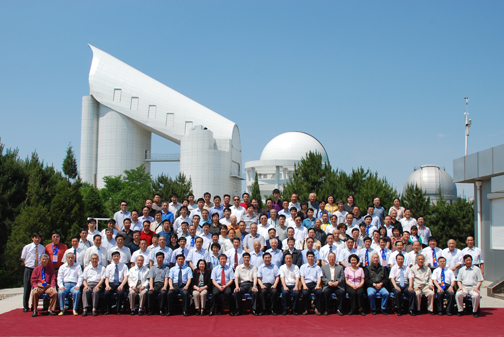|
The Large Sky Area Multi-Object Fiber Spectroscopic Telescope (LAMOST), a national big science project of China, just received its official blessing and ready for full formal run on June. 4th.
Located in Xinglong Observing Station, the National Astronomic Observatories of CAS, the facility cost 235 million yuan (34.4 million U.S. dollars) to construct. It has an effective aperture of over four meters, the biggest of its kind in the world, and 4,000 optical fibers that can simultaneously track space and decode starlight into enormous amounts of spectrographic data.
'A key innovation is an active optics system that deforms the correcting mirror's 24 plates individually, compensating for the spherical aberration of the primary mirror and bringing both mirrors into focus simultaneously,' said Cui Xiangqun, leading engineer for the project, who heads CAS' Nanjing Institute of Astronomical Optics and Technology.
Consisting of an MB (6.67m x 6.05m), and an MA (5.72m x 4.4m), the Schmidt telescope is able to observe the spectra of some 4000 celestial bodies over a 5-degree vision field, a system enjoying the largest vision field and highest spectrum acquisition rate in the world.
'Scientists can obtain spectral data of about 2,500,000 stars, 2,500,000 galaxies, 1,500,000 luminous red galaxies and 1 million quasars in an area of 24,000 square degree in three to five years,' Cui forecasts.
'The most active and ambitious optics experiment facility', as Ray Wilson, renowned active optics researcher put it, has carried out four trial observations, collecting 3600 spectrums each time up to now. New adjustments are underway, said scientists. At least 10 million spectrums may be obtained six years after LAMOST's formal run. All the data will be open for international scientific research.

related information:
China's finest telescope to scan most celestial spectra
|